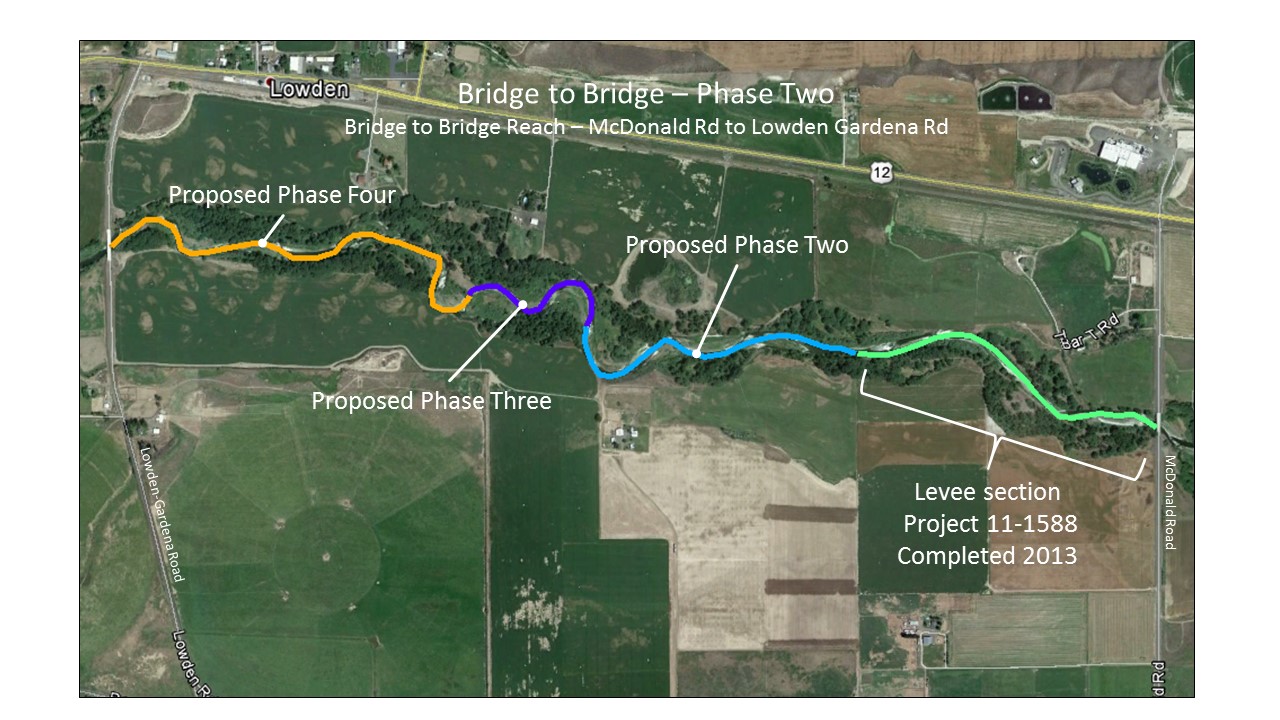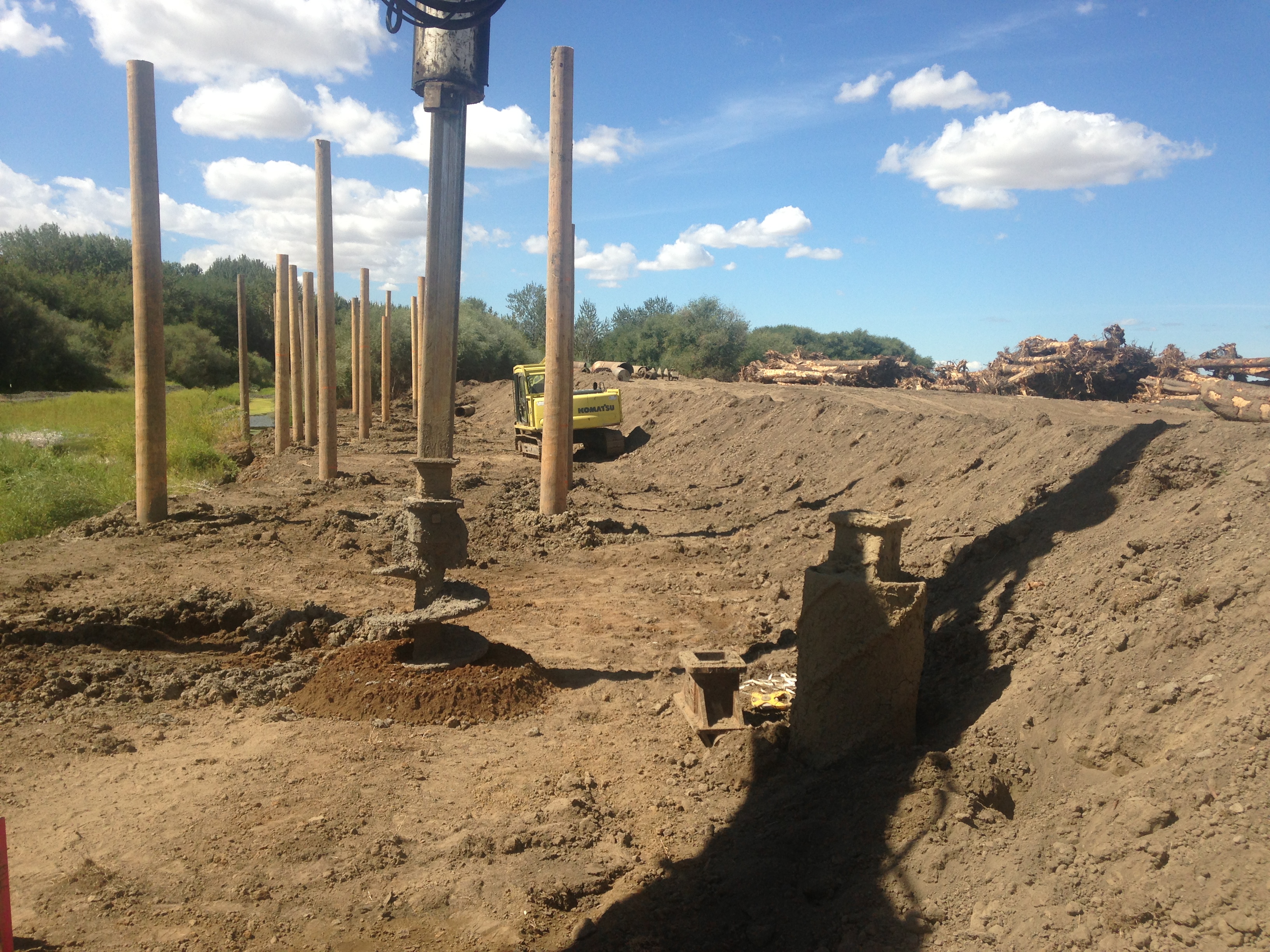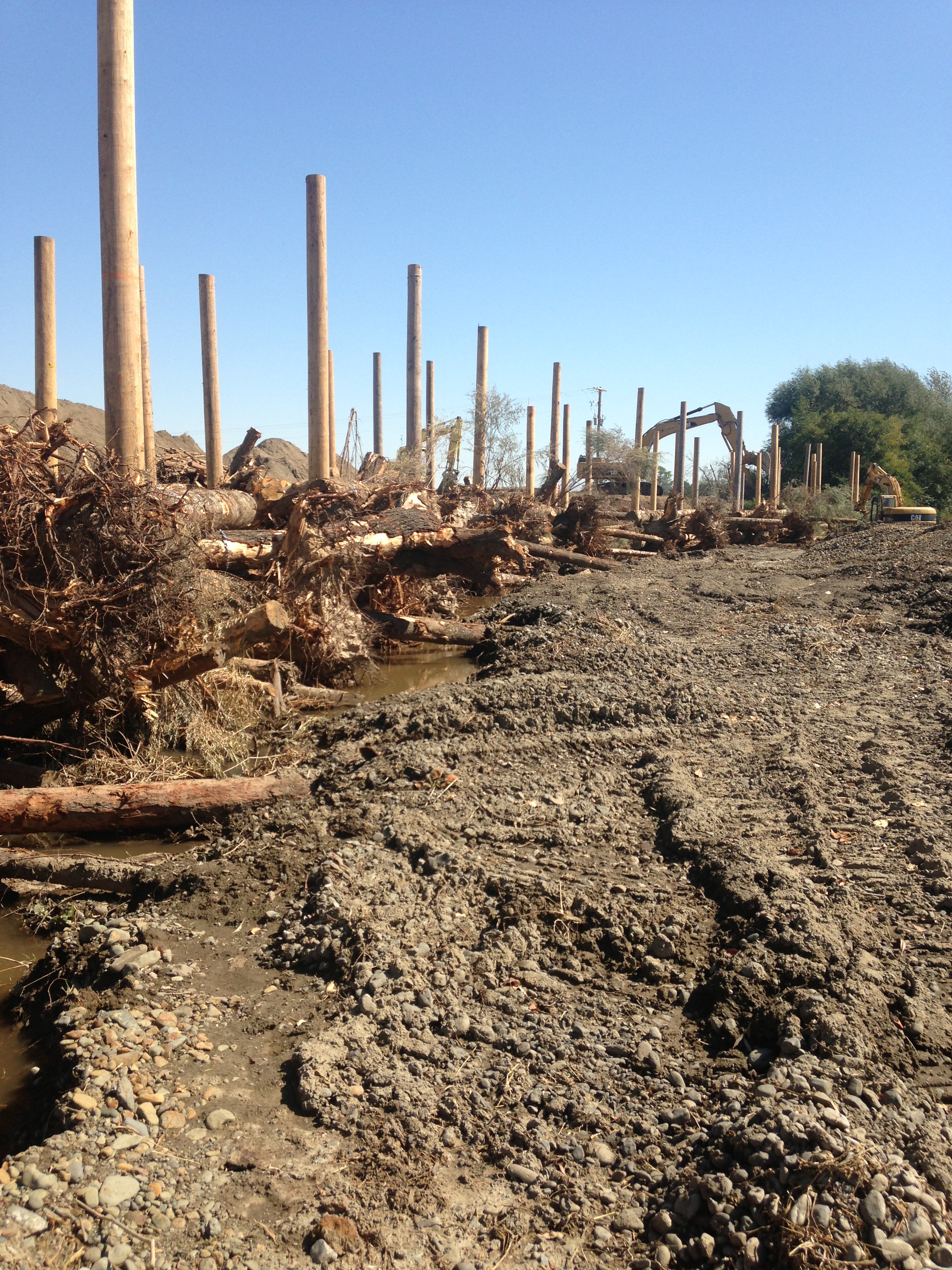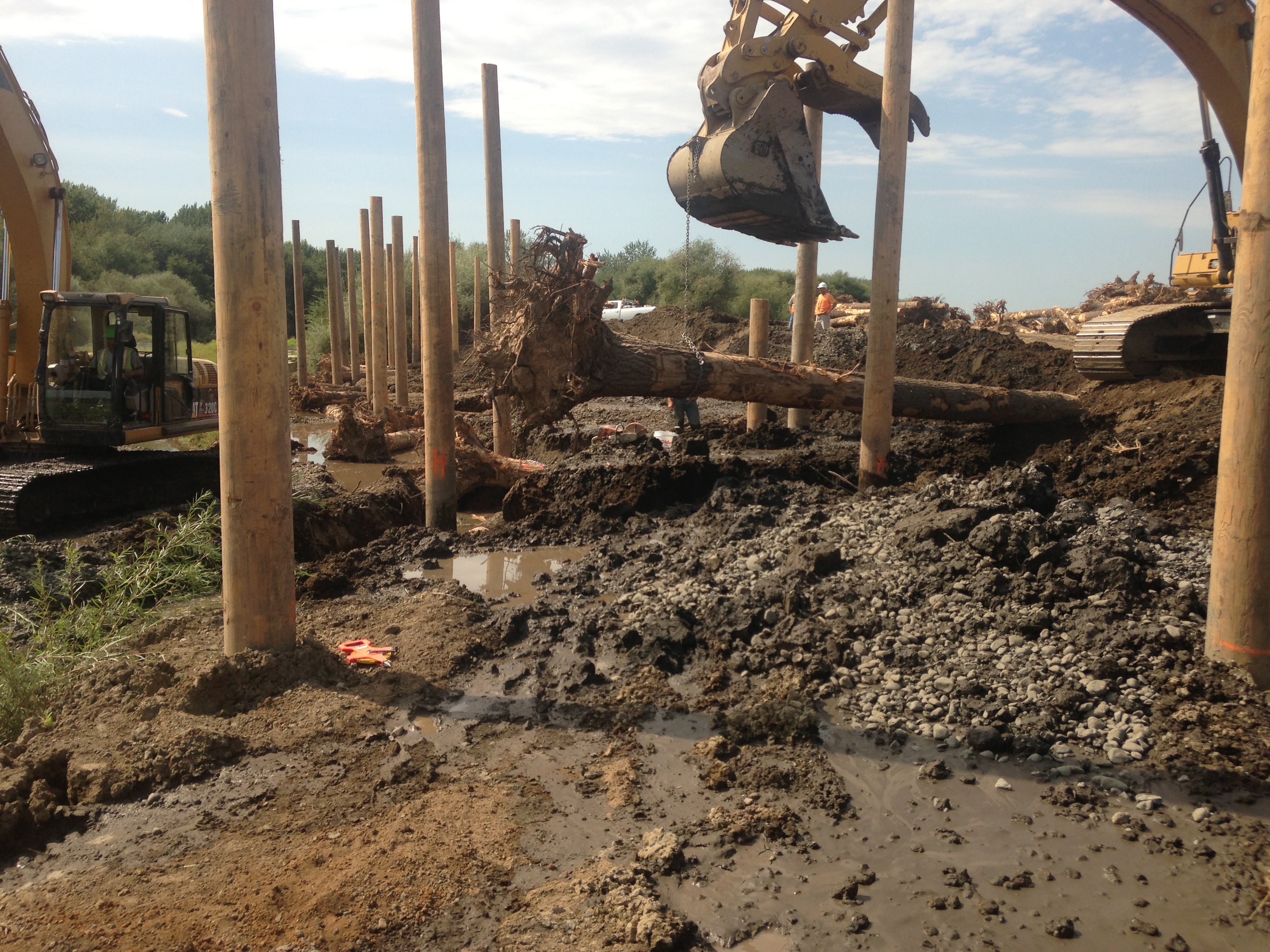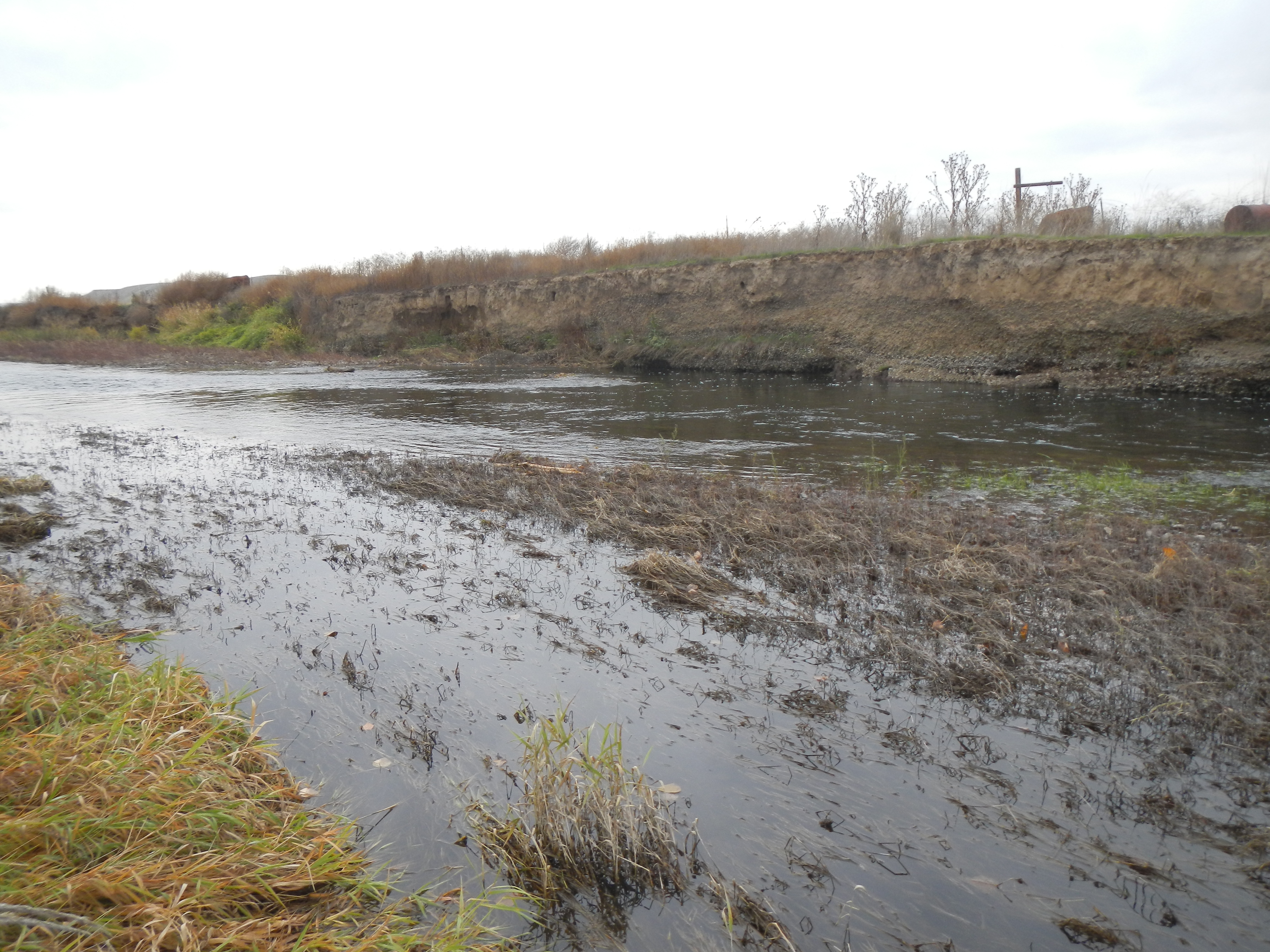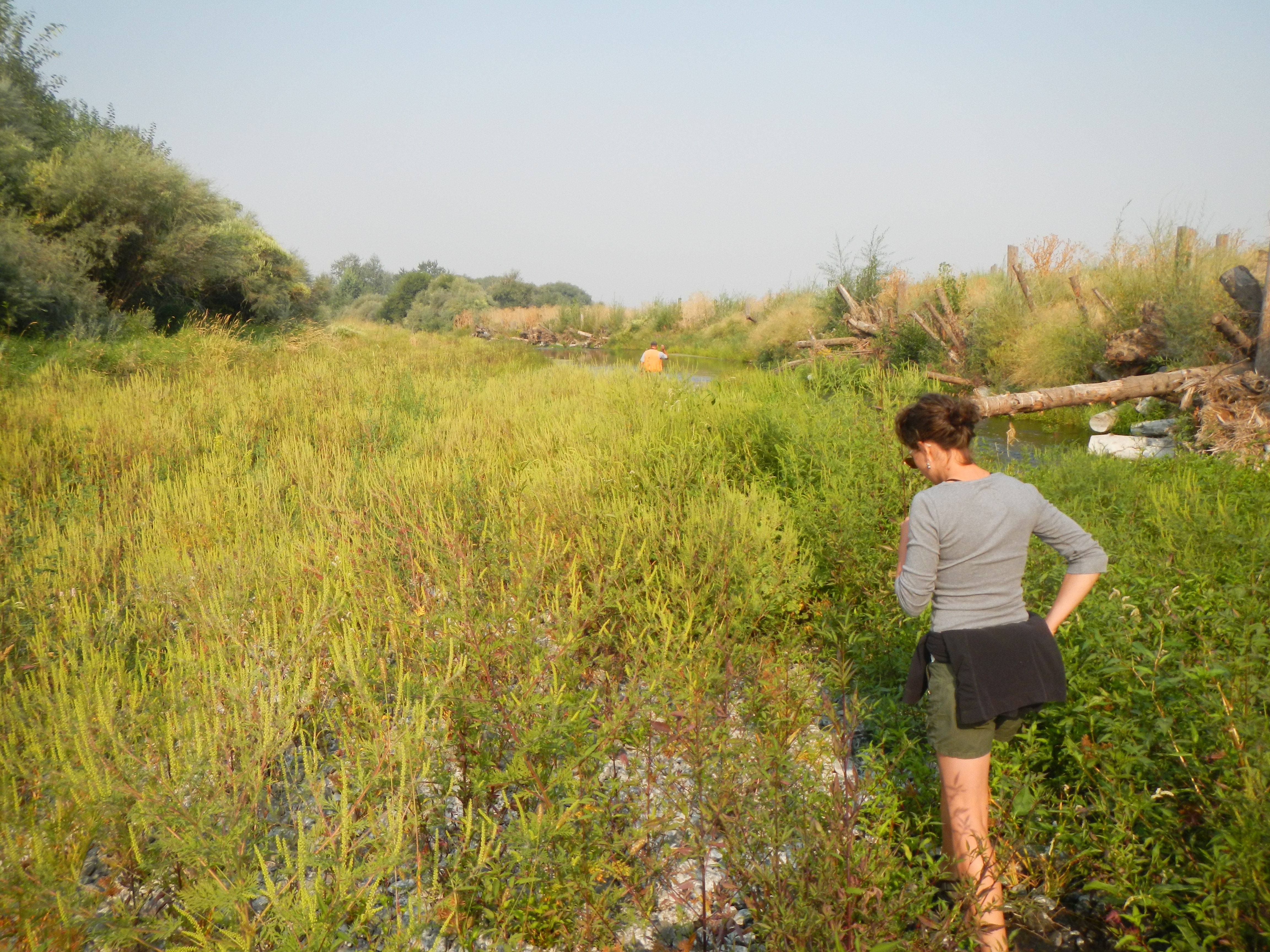Restoration on the Walla Walla River
The lower Walla Walla River presents degraded instream and riparian conditions. These degraded conditions impact adult and juvenile summer steelhead and spring chinook migrating through the lower Walla Walla, as well as bull trout using the lower Walla Walla during their seasonal movements. Tagging studies show that there are large losses of juvenile salmonids (as much as 75% in 2013) in the lower Walla Walla River, which includes this project’s reach.
Typical existing conditions in the reach (click each photo to enlarge).
The Bridge to Bridge Restoration Design Assessment, completed in 2010, resulted in a preferred alternative at the 30% design level for the Walla Walla River between the bridges at McDonald and Lowden-Gardena Roads. Final designs for the upper section of this reach were completed in 2011, and the project was constructed in 2013. That project removed one-half mile of levee and installed large woody debris throughout the project reach.
Construction in progress (click each photo to enlarge). The log piles were drilled in (instead of pounded in) due to site conditions, and then the log jam complex was built up around the piles.
Left: An eroding bank with no vegetation prior to construction. Right: The same site in 2015, two years after construction, with willow growth. (Click each photo to enlarge.)
Final designs were completed in July 2016 for the remaining reach. Construction of the final designs will be conducted in phases, and funding is being sought now.
Project Goals:
- Improve width/depth ratio in the project reach
- Improve pool and cover habitat in the project reach
- Increase instream complexity
- Improve riparian buffer width and function in the project reach
- Increase shading to reduce thermal loading
- Create self-sustaining conditions to maintain improved habitats
- Improve winter and spring high-flow off-channel areas
Project Elements:
- Pools and cover – Pool quantity and quality are limiting factors in the project reach. There are a few good pools, but they lack any cover. Log structures will provide and maintain pools and also provide immediate cover. Plantings are intended to provide additional cover in the long term.
- Stream complexity – Habitat diversity is another limiting factor in the project reach. Logs and log structures will provide immediate complexity and variation in the channel, and should increase these attributes over time.
- Off channel areas – Habitat diversity is improved by including off-channel areas. Several historic stream meanders are found in the project reach. Placement of log structures will encourage flow back into these channels. Because temperature is a limiting factor in the lower Walla Walla River, we will emphasize winter and spring off-channel areas. Warm water off-channel habitat will be discouraged due to an already large bullfrog population and due to warm water predator species that move into this area.
- Bank stabilization – Stream bank condition is noted among the limiting factors. A 600-foot long section of vertical bank lacks riparian vegetation, and offers little opportunity to establish meaningful plantings. A log structure complex along this section will provide bank stability while providing new plantings with an opportunity to become established and provide natural bank stabilization. This complex structure will include elements to provide habitat benefit, such as sweeper logs to maintain pools, and cover logs.
- Riparian planting – Poor riparian condition is a limiting factor on the lower Walla Walla River. In some locations, there are few to no riparian trees. In other places, the riparian canopy is far removed from shading the water. Native plantings will augment and improve riparian function.

